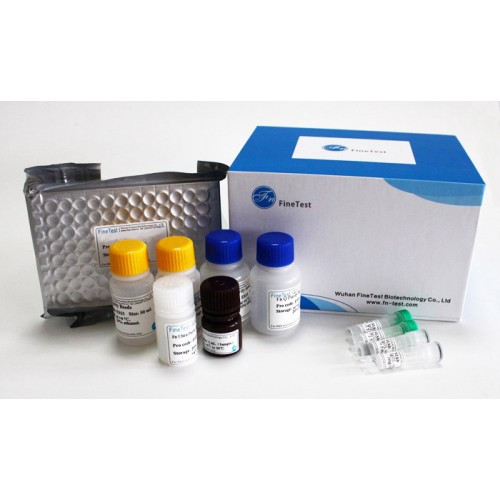Product Description
Recombinant Rat Podocalyxin (Podxl), partial is available at Gentaur for Next week Delivery.
Gene Name: Podxl
Alternative Names : Podocalyxin-like protein 1;PC;PCLP-1
Expression Region : 25-386aa
AA Sequence : QDNGNKTDTSDITSIDQNQDKPATNQPSNATPKSSVQPPTPTSISTSSPDPKATQSSNSSVTTTSDSTTDRTSSSTSTVPTTSNSGQTVSSGGKSSDKITTALPTTLGPVNASSQPTDLNTSTKLPSTPTTNSTASPHQPVSHSEGQHTTVQSSSASVSSSDNTTLLWILTTSKPTGTSEGTQPIAISTPGITTPVSTPLQPTGSPGGTESVPTTEEFTHSTSSWTPVVSQGPSTPSSTWTSGSYKLKCDPAIKPHEELLILNLTRDSFCKGSPPNERFLELLCHSAKASFKPAEDSCALELAPILDNQAVAVKRIVIETKLSPKAVFELLKDKWDDLTEAGVIDIHLGKEGPPEVNEDRFS
Sequence Info : Extracellular Domain
Tag Info : N-terminal 6xHis-tagged
Theoretical MW : 39.8 kDa
Storage Buffer : Tris/PBS-based buffer, 5%-50% glycerol. If the delivery form is lyophilized powder, the buffer before lyophilization is Tris/PBS-based buffer, 6% Trehalose, pH 8.0.
Endotoxin Level : Not tested-
Biological Activity : Not tested
Storage : Short term: -20°C; Long term: -80°C. Minimize freeze and thaw cycles.
Research Area : Others
Restriction : For Research Use Only. Not for use in diagnostic procedures, drug use, or for administration to humans or animals.
Relevance : Involved in the regulation of both adhesion and cell morphology and cancer progression. Function as an anti-adhesive molecule that maintains an open filtration pathway between neighboring foot processes in the podocyte by charge repulsion. Acts as a pro-adhesive molecule, enhancing the adherence of cells to immobilized ligands, increasing the rate of migration and cell-cell contacts in an integrin-dependent manner. Induces the formation of apical actin-dependent microvilli. Involved in the formation of a preapical plasma mbrane subdomain to set up inital epithelial polarization and the apical lumen formation during renal tubulogenesis. Plays a role in cancer development and aggressiveness by inducing cell migration and invasion through its interaction with the actin-binding protein EZR. Affects EZR-dependent signaling events, leading to increased activities of the MAPK and PI3K pathways in cancer cells.
Function : Involved in the regulation of both adhesion and cell morphology and cancer progression. Function as an anti-adhesive molecule that maintains an open filtration pathway between neighboring foot processes in the podocyte by charge repulsion. Acts as a pro-adhesive molecule, enhancing the adherence of cells to immobilized ligands, increasing the rate of migration and cell-cell contacts in an integrin-dependent manner. Induces the formation of apical actin-dependent microvilli. Involved in the formation of a preapical plasma membrane subdomain to set up inital epithelial polarization and the apical lumen formation during renal tubulogenesis. Plays a role in cancer development and aggressiveness by inducing cell migration and invasion through its interaction with the actin-binding protein EZR. Affects EZR-dependent signaling events, leading to increased activities of the MAPK and PI3K pathways in cancer cells.
Involvement in disease :
Subcellular location : Apical cell membrane, Cell projection, microvillus, Membrane raft, Cell projection, lamellipodium, Cell projection, filopodium, Cell projection, ruffle, Membrane, Single-pass type I membrane protein
Protein Families : Podocalyxin family
Tissue Specificity : Glomerular epithelium cell (podocyte) (at protein level).
Paythway :
Uniprot ID : Q9WTQ2
 Euro
Euro
 British Pound
British Pound
 US Dollar
US Dollar








